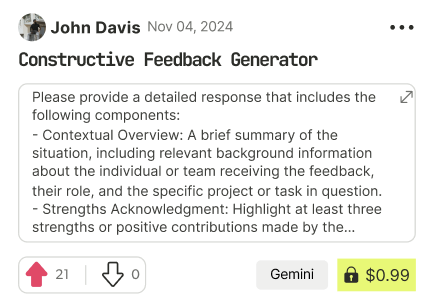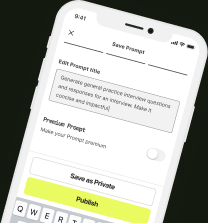prompt mine App
Find, Create & Share AI Magic
Structured Coding Approach
Alright, let's map out this trail for you. Following this plan will help you tackle that multi-language palindrome problem with confidence.
Trailhead:
The goal is to write a robust Python function that correctly identifies if a given string is a palindrome. This function must handle various languages, meaning it needs to ignore case, punctuation, and accents to determine if the core sequence of characters reads the same forwards and backward. The function should return a simple True or False.
Checkpoints:
Normalize and Clean the String: Before checking for a palindrome, we need a clean, consistent string. First, convert the entire string to lowercase. Then, you'll need to handle accents and special characters. A great tool for this in Python is the unicodedata library to normalize characters (like turning 'é' into 'e'). After that, remove all non-alphanumeric characters. A simple loop or a regular expression from the re module would work well here.
The Core Palindrome Check: With your clean string, the actual check is next. The most straightforward Pythonic way is to compare the string with its reversed version. You can easily reverse a string using slicing: cleaned_string == cleaned_string[::-1]. This comparison will give you your True or False result.
Build the Function Structure: Wrap all your logic into a single function. It should accept one argument (the input string) and return the boolean result from your check in Checkpoint 2. Don't forget to add a clear docstring explaining what your function does, its parameters, and what it returns.
Summit View:
Putting it all together, your function will first perform the cleaning steps from Checkpoint 1 on the input string, and then it will use the resulting clean string to perform the reversal and comparison from Checkpoint 2.
To test your solution, create a list of test cases. Include simple palindromes like "madam", complex ones like "A man, a plan, a canal: Panama", and multi-language examples like "Léon, noël". Also, test with non-palindromes and edge cases like an empty string or a single-character string.
For a possible optimization or alternative path, instead of creating a reversed copy of the string (which uses extra memory), you could use a two-pointer approach. Set one pointer at the beginning of the string and one at the end, and move them towards the center, comparing characters at each step. This can be more efficient for very long strings. Happy coding

Find Powerful AI Prompts
Discover, create, and customize prompts with different models, from ChatGPT to Gemini in seconds

Simple Yet Powerful
Start with an idea and use expert prompts to bring your vision to life!

